The part that heats the e-liquid
The technical principle behind vaporisation has hardly changed since the e-cigarette was first industrialised by Hon Lik. Housed inside a cartridge, the first resistance coils fitted cigalike-type e-cigarette models, and even then used a Kanthal resistance wire surrounded by an absorbent material, usually fibreglass or synthetic foam. Today, although the materials have changed, the principle remains the same. A short history of resistance wicks might read as follows:
- 2009: Nylon 6 wadding, carded cotton wool, fibreglass
- 2011: Silicon fibre, mesh
- 2012: Fonty cotton, organic cotton
- 2014: Cotton Bacon, Fiber Freaks
Nowadays, there also are different types of metal for making coils. As well as the traditional Kanthal, you can now buy coils made of nickel-chrome, stainless steel or titanium. These allow mods to control temperature better, or improve conductivity between the battery and the coil.
The resistance values of these metal wires are decreasing all the time. It’s quite common nowadays to use a resistance of less than 1 ohm, a figure which has halved since 2009, giving rise to the name “sub-ohm” (below 1 ohm) for this type of coil.
This trend is explained by a “race for the cloud” which has driven the market to produce increasingly high-performance atomizers. In fact, the lower the resistance the faster it heats and the hotter it gets. That vaporises more e-liquid and creates denser vapour. But it takes a lot more e-liquid to work that fast and at higher temperatures, so the coil needs to be wrapped in an effective absorbent material and must be kept moist. A direct result of low-resistance, high-power atomizers is that the vapour contains higher levels of nicotine. That has led the e-liquid market to adapt to more popular, relatively low nicotine levels (0, 3 or 6 mg/ml).
The absorbent materials used to hold the e-liquid in resistance coils have also changed. The synthetic foam used in the first cartomizers was dropped in favour of the plant fibre (cotton-based) now used in most resistance coils. Its excellent wicking properties mean cotton can deliver a lot more e-liquid to the atomizer. Ceramic systems are now gaining ground as an alternative to cotton.
How a coil works

Using a coil
As they come into direct contact with the e-liquid and are subject to huge temperature variations, resistance coils in e-cigarettes have a limited lifespan. It’s important to use the right resistance coil for your equipment (your box mod for example). Apart from the obvious need to be compatible (atomizer manufacturers generally only make resistance coils that work with their own products), it is essential that you set the wattage of your e-cigarette to the most suitable setting for the resistance coil you’re using (check the user guide for your device). The table below shows vaping power depending on the resistance and voltage produced by the mod. The good thing about electronic mods is that they regulate the wattage themselves and do these calculations for you.
Power based on voltage (V) and resistance (Ω)
The table below shows vaping power depending on the resistance and voltage produced by the mod. The good thing about electronic mods is that they regulate the wattage themselves and do these calculations for you.
Power based on voltage (V) and resistance (Ω)

N.B.: The hotter your resistance coil gets (high voltage), the more the e-liquid can degrade. Although e-cigarette vapour is less harmful for smokers than smoking tobacco, it is important to remember that vapour can contain compounds that may be harmful to health (particularly aldehydes). This applies even more when an e-liquid is heated a lot and the resistance coil doesn’t get enough e-liquid. That’s why we advise not overheating your resistance coil, spacing out your puffs and always making sure your resistance coil is always well-soaked in e-liquid.
When should you change your coil?
The easiest way to know when to change your resistance coil is to pay attention to how it feels when you vape. If your regular e-liquid is losing its flavour, the vapour is generally starting to taste burnt, or it feels drier than usual, it’s probably time to change your resistance coil. You can also look at the resistance coil to check that it’s not too clogged up. A phenomenon known as the Maillard reaction means that heating e-liquid degrades it, leaving dark-coloured deposits on the surface of the resistance coil. Unfortunately, depending on the type of resistance coil you use, it might be impossible to look and check because you can’t actually see it or the cotton. In that case, you’ll have to rely on your taste buds to know when the resistance coil is worn out. If you vape every day, changing the resistance coil every two weeks, or more often, seems to us to be a fairly consistent average.
Coil FAQ
Below is the list of frequently asked questions about e-cigarette resistance coils. If you can’t find an answer to your question, feel free to leave your question in the comment box below.
Which coil should I choose?
Each brand of clearomizer has its own type of resistance coil. Some models of clearomizer allow you to use the same resistance coils (e.g. some Kanger, Joyetech or Aspire devices), but you still need to check the technical data sheet for your device and only buy compatible resistance coils. You also need to pay attention to the resistance value, shown in ohms, and the type of resistance wire they use (Kanthal, nickel, etc.) to set up your mod or battery correctly. If the resistance is low (less than 1 omh), don’t turn up the power of your mod too much.
When should you change your coil?
You normally have to change the resistance coil as soon as the usual flavour of your e-liquid fades or it tastes bad (slight dusty or burnt taste). This might be every two weeks for daily use, or more often if your e-liquid tends to clog the coils (usually very sweet e-liquids). You can also check the resistance coil for black deposits. If there are any, it’s time to change it.
How do you clean a coil?
Don’t dry burn it! That means switching on your e-cigarette without any e-liquid or air flow so it glows red. But this might affect the resistance coil. You could soak it in hot water for several hours, without any solvent, and then leave it to dry. The best thing to do is just to replace the resistance coil.
How do you prime a coil?
Resistance coils always contain an absorbent material to hold the e-liquid. When you change the resistance coil, you need to make sure the resistance coil has time to soak properly. Once you’ve fitted the new coil, pour the e-liquid into your clearomizer and wait 5 minutes. You can also draw up the e-liquid by sucking through the mouthpiece (drip tip) while the e-cigarette is switched off. Finally, test the resistance coil on a low power setting – if your mod or battery allow it- before you vape properly.
How do I know if my coil is working properly?
If your device has a screen to display the setting options, look for the resistance value in ohms. This number must match what is shown on the resistance coil packaging. It is also usually engraved on the body of the resistance coil. A resistance coil that is working properly usually crackles, a sign that the e-liquid is vaporizing.
The average price of a resistance coil can vary from 2 to 10 euros, depending on the type. That can increase your vaping budget significantly, which is why some vapers opt for coils they make themselves, using rebuildable atomizers.
Here are our top product recommendations
-
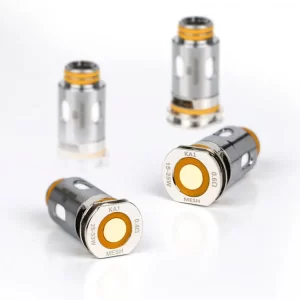 Geekvape B Series Coils 5PCS/PACK$6.90
Geekvape B Series Coils 5PCS/PACK$6.90 -
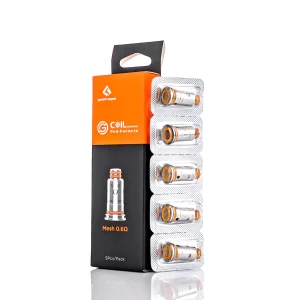 Geekvape G Series Coils 5pcs/pack$5.28
Geekvape G Series Coils 5pcs/pack$5.28 -
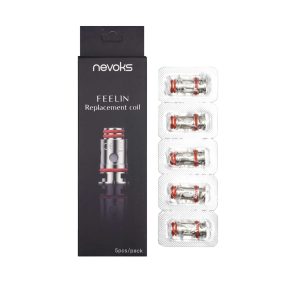 Nevoks SPL 10 Replacement Coil for Feelin (5pcs/pack)$6.00
Nevoks SPL 10 Replacement Coil for Feelin (5pcs/pack)$6.00 -
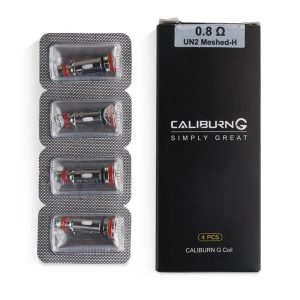 Uwell Caliburn G Coils / Koko Prime Coils / G2 Replacement Coils(4pcs/pack)$5.75 – $6.16
Uwell Caliburn G Coils / Koko Prime Coils / G2 Replacement Coils(4pcs/pack)$5.75 – $6.16 -
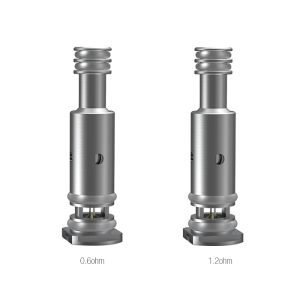 Smoant Battlestar Baby / Charon Baby Replacement Coil (3pcs/pack)$3.27
Smoant Battlestar Baby / Charon Baby Replacement Coil (3pcs/pack)$3.27
